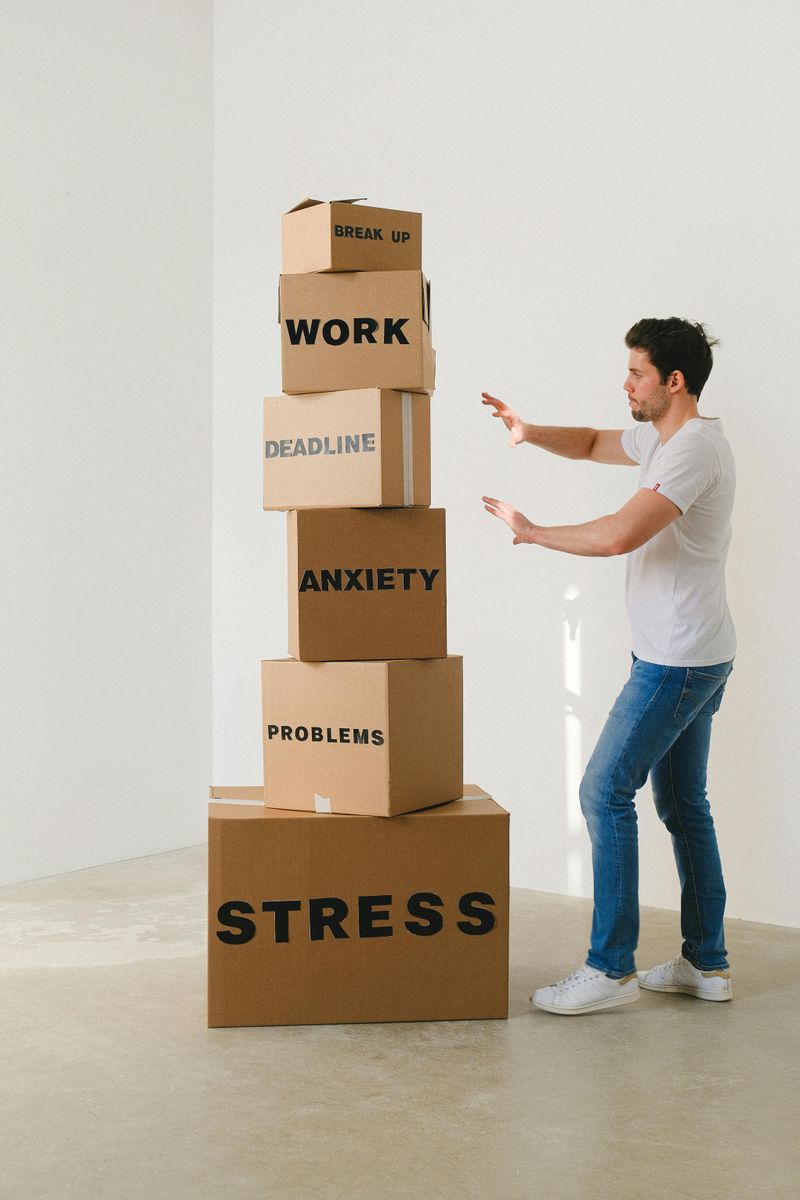15 Things to Know Before Downsizing

Downsizing your home can be both liberating and challenging. Whether you’re an empty nester, retiree, or simply seeking a simpler lifestyle, moving to a smaller space requires careful planning. The process involves more than just packing boxes – it’s about reimagining your lifestyle and making thoughtful decisions about what truly matters to you.
1. Define Your Motivation

Clarity about why you’re downsizing creates a powerful compass for decision-making. Financial freedom might be your goal – smaller homes typically mean reduced mortgage payments, lower utility bills, and decreased maintenance costs. Perhaps you’re seeking less responsibility and more time for hobbies or travel.
Maybe health concerns are prompting a move to a more manageable space. Some downsize to be closer to family or to reduce their environmental footprint. Whatever your reasons, write them down.
Revisit this list when feeling overwhelmed or uncertain during the process. Your motivation will serve as an anchor, helping you stay focused when sorting through decades of belongings or facing tough choices about what stays and what goes.
2. Crunch the Real Numbers

Thinking of downsizing? It can be a smart move—but don’t let hidden costs catch you off guard. Be sure to include things like agent commissions, moving fees, any renovation needs, storage if needed, and closing costs for both the home you’re selling and the one you’re buying.
Property taxes and insurance might change dramatically. A smaller home doesn’t always mean proportionally smaller costs – utilities often have base rates regardless of usage. HOA fees in condos or planned communities can offset some savings from reduced square footage.
Consider potential capital gains tax implications from your home sale. Create a comprehensive spreadsheet comparing current expenses against projected costs in your new situation. This financial clarity helps prevent unpleasant surprises and ensures your downsizing actually achieves your financial goals.
3. Future-Proof Your Choice

Aging considerations deserve serious attention when selecting your downsized home. Single-level living eliminates troublesome stairs that might become barriers later. Wider doorways accommodate potential mobility devices, while lever-style door handles prove easier to manage than round knobs if arthritis develops.
Bathroom safety features like walk-in showers with grab bars can prevent dangerous falls. Consider proximity to quality healthcare facilities – what seems like a minor inconvenience now could become crucial later. Kitchen accessibility matters too: reaching high cabinets grows more difficult with age.
Think beyond immediate needs to potential future scenarios. Will adult children need temporary living space during transitions? Could you accommodate a caregiver if needed? Smart downsizing anticipates tomorrow’s needs while solving today’s challenges.
4. Location Trumps Square Footage

It’s easy to get caught up in square footage, but more space doesn’t always mean a better lifestyle. Living in a walkable neighborhood with easy access to transit and local shops can make a smaller home feel a lot more fulfilling than a sprawling house far from everything.
Medical facilities nearby become increasingly important as we age. Cultural amenities, recreational opportunities, and religious institutions contribute significantly to life satisfaction. Family proximity deserves careful weighing – being close to grandchildren might justify sacrificing some space.
Research crime statistics, future development plans, and neighborhood stability before committing. Visit potential locations at different times of day to assess noise levels, traffic patterns, and general atmosphere. Remember: you’re not just buying a smaller home – you’re choosing a new lifestyle environment that should enhance your daily experience.
5. Decluttering Demands Dedication

Most people drastically underestimate the time required to sort through decades of accumulated possessions. Start the decluttering process at least six months before your planned move date. Begin with low-emotional-attachment areas like the garage or kitchen cabinets before tackling sentimental items.
The four-box method works wonders: keep, donate, sell, trash. Be ruthlessly honest about what you actually use versus what you’ve simply stored. Remember that many items can be digitized – photo albums, documents, and music collections often don’t require physical space.
Schedule specific decluttering sessions on your calendar to maintain momentum. Celebrate small victories along the way. Consider hiring a professional organizer if you feel overwhelmed – their objective perspective and systems can dramatically accelerate the process while reducing emotional strain.
6. Emotional Attachments Run Deep

Physical objects often carry powerful emotional significance beyond their practical value. Family heirlooms, children’s artwork, and souvenirs from special trips represent memories and connections, not just things. Acknowledge these emotional attachments rather than dismissing them.
Photographing special items before parting with them can preserve their memory while freeing physical space. Consider keeping just one representative item from collections rather than entire sets. Family members might welcome certain treasured pieces, creating new chapters in their stories.
Give yourself permission to feel sad about certain departures. Some people find small ceremonies helpful when parting with particularly meaningful objects. Remember that the memories associated with possessions remain yours even when the items themselves move on to new homes or purposes.
7. Storage Solutions Require Strategy

While storage units feel like a smart short-term fix during downsizing, they can easily become expensive reminders of delayed decisions. A $150/month unit adds up to $1,800 a year—often to store belongings you haven’t missed. Be honest: if you haven’t needed it yet, will you ever?
If temporary storage proves necessary, set a firm timeline and stick to it. Choose climate-controlled options for valuable or delicate items. Inventory everything that goes into storage with photos and detailed lists to prevent forgotten contents.
Better alternatives often exist: gifting special items to friends or family who will appreciate them, donating to charitable organizations, or selling through consignment shops or online marketplaces. Remember that the freedom from maintaining excess possessions often outweighs the comfort of knowing they’re stored somewhere.
8. Measure Twice, Move Once

Furniture that fit perfectly in your larger home often overwhelms smaller spaces. Create detailed floor plans of your new home with exact measurements of each room, including doorway widths and ceiling heights. Measure your existing furniture pieces and create paper cutouts to experiment with different arrangements.
Many digital tools and apps can help visualize furniture placement virtually. Pay special attention to traffic flow patterns – cramped pathways quickly become frustrating. Consider multi-functional furniture pieces that maximize utility while minimizing footprint.
Remember to measure staircases, elevators, and hallways in your new building to ensure large pieces can actually reach your unit. Sometimes beloved furniture simply won’t fit physically or visually in your new space. Making these discoveries before moving day saves considerable expense and heartache – and prevents paying to move items that ultimately won’t work.
9. Budget for Unexpected Expenses

Even downsizing doesn’t guarantee a cheaper move. Movers charge for more than just mileage—weight, specialty items, and fragile antiques can all raise your total. Plus, packing materials aren’t cheap. Good boxes, bubble wrap, and tape can cost you far more than you think.
New spaces often require modifications: different window treatments, bathroom upgrades, or kitchen adjustments. Smaller homes might need specialized furniture that fits compact dimensions. Apartment or condo living typically involves security deposits, application fees, and possibly higher insurance premiums.
Homeowners association fees can significantly impact monthly budgets, sometimes offsetting the savings from reduced square footage. Build a 20% buffer into your downsizing budget for these unexpected expenses. This financial cushion reduces stress when surprises inevitably arise during your transition to a more compact living situation.
10. Reimagine Your Daily Routines

Smaller spaces require reconsidering how you live each day. Morning routines might need adjustment if bathroom space is shared more intimately. Cooking habits often change in compact kitchens with less counter space and fewer cabinets. Hobbies requiring dedicated space – crafting, woodworking, exercise equipment – may need creative solutions.
Entertaining looks different in downsized homes. Instead of hosting large dinner parties, you might explore restaurant gatherings or smaller, more intimate home events. Outdoor spaces become extensions of living areas when properly designed.
Noise considerations become more prominent in townhomes or condos with shared walls. Privacy needs require thoughtful planning in compact quarters. Before committing to a dramatically smaller space, try visualizing your typical week – hour by hour – in the new environment. This mental rehearsal reveals potential friction points you can address proactively.
11. Time Your Market Move Wisely

A home’s value isn’t just brick and mortar—it’s timing and context. In a buyer’s market, your spacious past can fetch a modest future. Don’t let poor timing rewrite your downsizing story. Read the local market like a weather forecast—then choose your moment.
Spring typically brings more buyers and potentially higher prices in many markets. However, this advantage might be offset if you’re also buying in the same competitive environment. Consider the possibility of temporary housing if selling and buying timing doesn’t align perfectly.
Work with a real estate agent who specializes in your specific neighborhood and understands the downsizing transition. Their expertise can help position your home effectively for sale while guiding you toward appropriate smaller properties. Sometimes renting your new smaller space before selling allows you to test-drive the downsized lifestyle without immediate commitment.
12. Navigate Tax and Legal Implications

Home sales can trigger significant tax consequences depending on your circumstances. The IRS allows married couples to exclude up to $500,000 in capital gains ($250,000 for singles) when selling a primary residence you’ve lived in for at least two of the past five years. Beyond these thresholds, capital gains taxes apply.
Property tax impacts vary dramatically between locations. Some areas offer senior tax exemptions or reductions that might influence your destination choice. Moving across state lines? Research income tax differences that could affect retirement income.
Estate planning documents often need updating after significant property changes. Review your will, trusts, and power of attorney documents with your attorney after downsizing. If moving to a retirement community, carefully review all contracts and homeowners association agreements for restrictions that might affect your lifestyle or future options.
13. Prioritize Community Connections

You’re not just moving—you’re rebuilding your lifestyle. And that includes your social circle. Isolation after a big move isn’t just lonely—it’s a legitimate health risk. So don’t wait to “settle in.” Choose a location with built-in ways to connect: volunteer groups, art classes, walking clubs, or faith communities. Your future self will thank you.
Visit potential neighborhoods at different times to observe community interaction patterns. Are people walking, gathering in common areas, or primarily staying isolated? Look for evidence of community events on bulletin boards or local publications.
Consider proximity to existing friends and family networks when possible. Building entirely new social connections takes significant time and energy. Some planned communities and senior living arrangements specifically design for social interaction with common spaces and organized activities. These built-in community features can ease the transition, particularly for those moving to entirely new geographic areas.
14. Prepare for the Emotional Journey

Downsizing triggers complex emotions that catch many people by surprise. Nostalgia, grief, relief, and excitement often coexist during this transition. The home you’re leaving likely witnessed significant life chapters – raising children, celebrating milestones, weathering difficulties. Acknowledging these emotional attachments helps process the transition healthily.
Create intentional farewell rituals before leaving your larger home. Perhaps host a gathering where friends share memories, take photographs of favorite spaces, or write down significant events that happened there. These ceremonies provide emotional closure.
Expect adjustment periods after moving. Initial excitement might give way to moments of doubt or regret – this is normal. Focus on personalizing your new space quickly with meaningful items that provide continuity and comfort. Journaling during this transition helps process feelings and document your journey toward embracing a simpler, more intentional lifestyle.
15. Begin the Process Early

Treat downsizing like training for a marathon—you can’t sprint your way through it. Give yourself at least 6 months to declutter, decide, and maybe even reminisce a little. Begin with the “easy wins” in storage-heavy, low-sentiment zones. Think of it as warming up before the real emotional heavy lifting begins.
Create a realistic schedule with specific goals for each week or month. Tackling one category at a time (books, clothing, kitchenware) proves more effective than attempting to clear entire rooms simultaneously. Document your progress with photos to maintain motivation.
Early preparation allows for multiple rounds of decluttering, each becoming progressively easier as your downsizing muscles strengthen. This gradual approach also provides time for family members to select meaningful items, for charitable organizations to arrange pickups, and for potential buyers to discover available pieces. The gift of time transforms downsizing from crisis management to thoughtful life transition.

Comments
Loading…